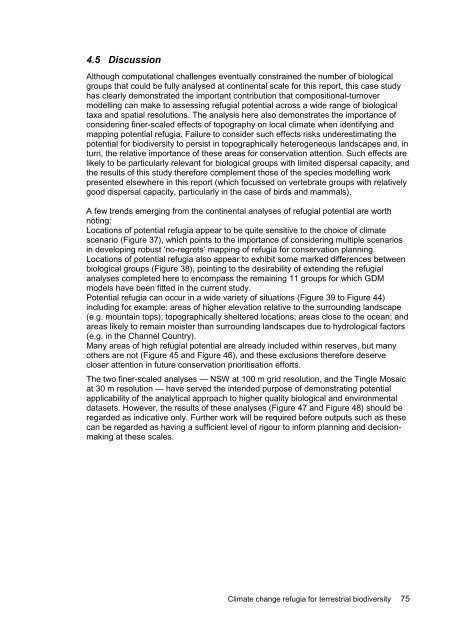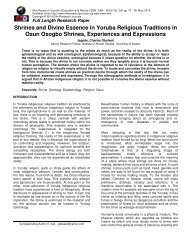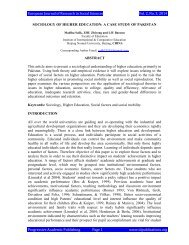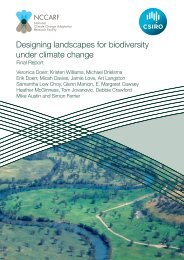Williams-Climate-change-refugia-for-terrestrial-biodiversity_0
Williams-Climate-change-refugia-for-terrestrial-biodiversity_0
Williams-Climate-change-refugia-for-terrestrial-biodiversity_0
Create successful ePaper yourself
Turn your PDF publications into a flip-book with our unique Google optimized e-Paper software.
4.5 Discussion<br />
Although computational challenges eventually constrained the number of biological<br />
groups that could be fully analysed at continental scale <strong>for</strong> this report, this case study<br />
has clearly demonstrated the important contribution that compositional-turnover<br />
modelling can make to assessing <strong>refugia</strong>l potential across a wide range of biological<br />
taxa and spatial resolutions. The analysis here also demonstrates the importance of<br />
considering finer-scaled effects of topography on local climate when identifying and<br />
mapping potential <strong>refugia</strong>. Failure to consider such effects risks underestimating the<br />
potential <strong>for</strong> <strong>biodiversity</strong> to persist in topographically heterogeneous landscapes and, in<br />
turn, the relative importance of these areas <strong>for</strong> conservation attention. Such effects are<br />
likely to be particularly relevant <strong>for</strong> biological groups with limited dispersal capacity, and<br />
the results of this study there<strong>for</strong>e complement those of the species modelling work<br />
presented elsewhere in this report (which focussed on vertebrate groups with relatively<br />
good dispersal capacity, particularly in the case of birds and mammals).<br />
A few trends emerging from the continental analyses of <strong>refugia</strong>l potential are worth<br />
noting:<br />
Locations of potential <strong>refugia</strong> appear to be quite sensitive to the choice of climate<br />
scenario (Figure 37), which points to the importance of considering multiple scenarios<br />
in developing robust ‘no-regrets’ mapping of <strong>refugia</strong> <strong>for</strong> conservation planning.<br />
Locations of potential <strong>refugia</strong> also appear to exhibit some marked differences between<br />
biological groups (Figure 38), pointing to the desirability of extending the <strong>refugia</strong>l<br />
analyses completed here to encompass the remaining 11 groups <strong>for</strong> which GDM<br />
models have been fitted in the current study.<br />
Potential <strong>refugia</strong> can occur in a wide variety of situations (Figure 39 to Figure 44)<br />
including <strong>for</strong> example: areas of higher elevation relative to the surrounding landscape<br />
(e.g. mountain tops); topographically sheltered locations; areas close to the ocean; and<br />
areas likely to remain moister than surrounding landscapes due to hydrological factors<br />
(e.g. in the Channel Country).<br />
Many areas of high <strong>refugia</strong>l potential are already included within reserves, but many<br />
others are not (Figure 45 and Figure 46), and these exclusions there<strong>for</strong>e deserve<br />
closer attention in future conservation prioritisation ef<strong>for</strong>ts.<br />
The two finer-scaled analyses — NSW at 100 m grid resolution, and the Tingle Mosaic<br />
at 30 m resolution — have served the intended purpose of demonstrating potential<br />
applicability of the analytical approach to higher quality biological and environmental<br />
datasets. However, the results of these analyses (Figure 47 and Figure 48) should be<br />
regarded as indicative only. Further work will be required be<strong>for</strong>e outputs such as these<br />
can be regarded as having a sufficient level of rigour to in<strong>for</strong>m planning and decisionmaking<br />
at these scales.<br />
<strong>Climate</strong> <strong>change</strong> <strong>refugia</strong> <strong>for</strong> <strong>terrestrial</strong> <strong>biodiversity</strong> 75






